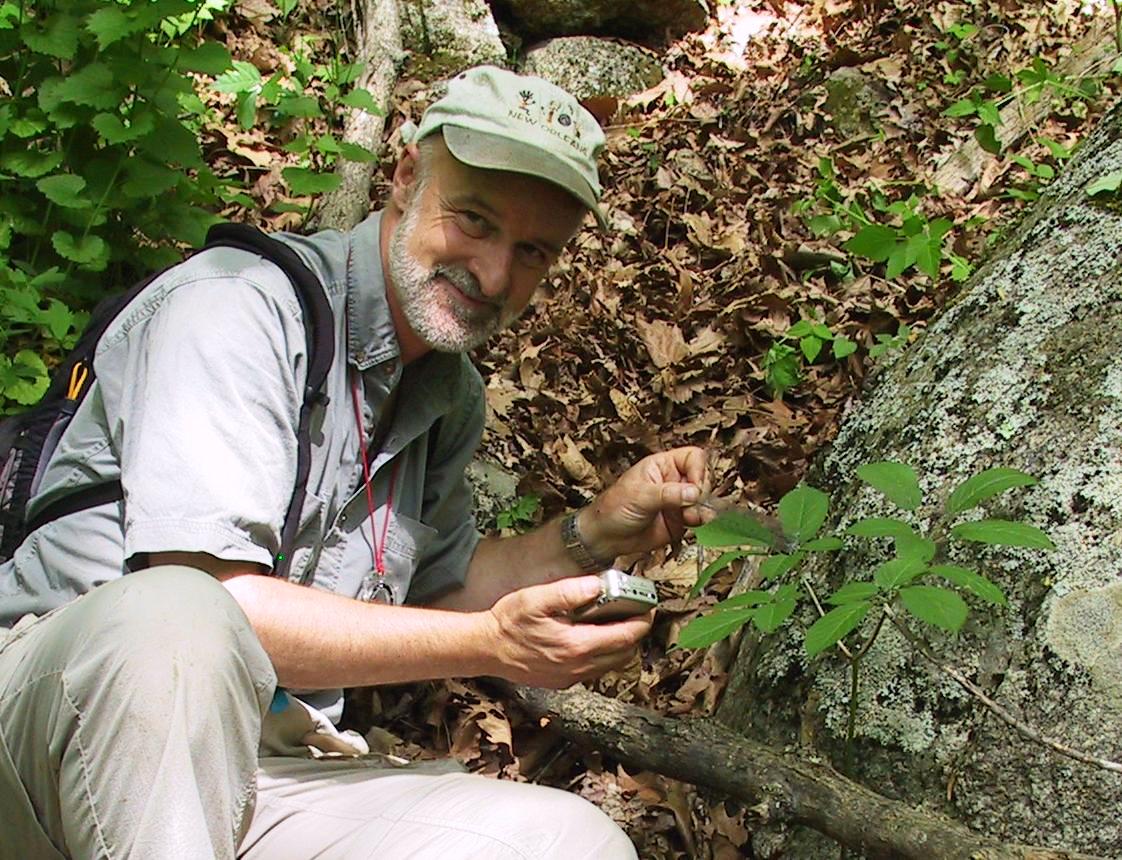Using Facebook to share ecology
This post contributed by Nadine Lymn, ESA Director of Public Affairs
“What do the small ground finch, medium ground finch, and Charlie Sheen have in common? You may know the answer after today’s lecture…;)”
James McGraw (pictured above), a professor of ecology at West Virginia University, posted the above question on his Facebook Group page for undergraduate biology. After several others had ventured guesses, one astute student provided the correct answer: “character displacement.” Yes, groan-inducing puns (are there any others?) became one characteristic of the professor’s social media experiment which he relates in a recent article in the Bulletin of the Ecological Society of America.
He’d noticed that in this large (100-plus) introductory biology course, attracting and holding the attention of students was growing ever more challenging. Not only is the sheer size not conducive to effectively engaging students, many undergraduates enrolled in such classes are simply getting a requirement out of the way, and may not be terribly enthusiastic or see the relevance of the material to their lives or career goals. And the constant distraction of online alternatives to one’s actual surroundings added new and powerful competition to the professor’s attempt to capture the attention of his pupils.
As McGraw noted with dismay: “….many of them can be found staring intently at their smart phones, tapping away at the face of their ever present electronic companions….some of these students remain transfixed by their i-devices 20 minutes into the lecture.”
So McGraw decided to become part of their online conversation and started a Facebook Group page for his biology class. Recognizing that some have significant privacy concerns with social media, he did not make this a course requirement and did not share vital course material via Facebook to which nonjoiners did not also have access. His primary objective was to provide students opportunities to think more deeply about ecological topics.
By the end of the semester, 119 out of 189 students (63 percent) had joined the Biology Facebook Group. Forty percent were “lurkers” who never posted a “like” or a “comment” while 71 students contributed comments, links, or “liked” a particular post.
McGraw’s used the Biology Facebook Group page to link news articles that were relevant to material covered in class, to encourage students to take advantage of relevant lectures on campus, to introduce them to other ecologists, and to generate discussion about a particular concept. He also started a miniseries of “Creature Feature” posts whereby students who participated in extra-credit bird walks got to vote on their favorite bird of the day, usually by selecting the “splashiest” bird species, such as Indigo Bunting or Scarlet Tanager.
At the end of the semester, McGraw asked students to provide anonymous feedback about the usefulness of the Biology Facebook page. Eighty percent felt the group page had helped them learn more about the topic and the students’ performance relative to previous exams suggests that they did. Perhaps coinciding with that outcome, the social medium helped bridge the gap between the professor and the students by creating a more intimate environment than could be achieved in the large classroom.
Said McGraw in the ESA Bulletin article: “The social barriers so typical of student-professor interactions were not absent on Facebook, but were much reduced by the more casual atmosphere of the posts and the frequent use of humor…..I especially enjoyed that certain students started feeling secure enough to crack jokes and post their own links to ideas we had talked about in class.” And McGraw believes the social media outlet gave him a supplemental way to show students how ecology is relevant to their lives.
How do you use Facebook or other social media to share your enthusiasm for ecology?
